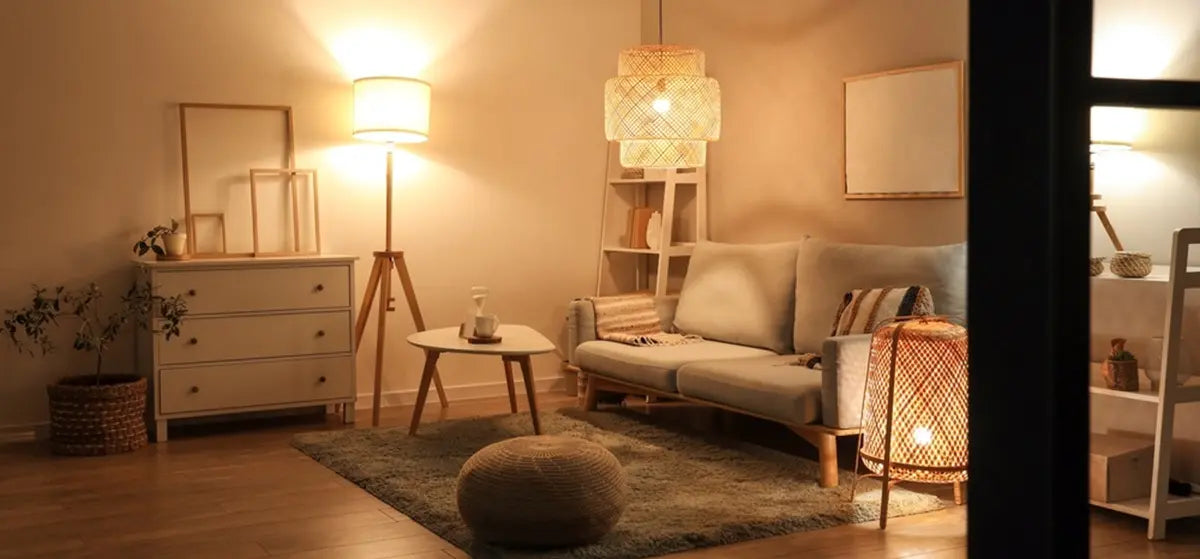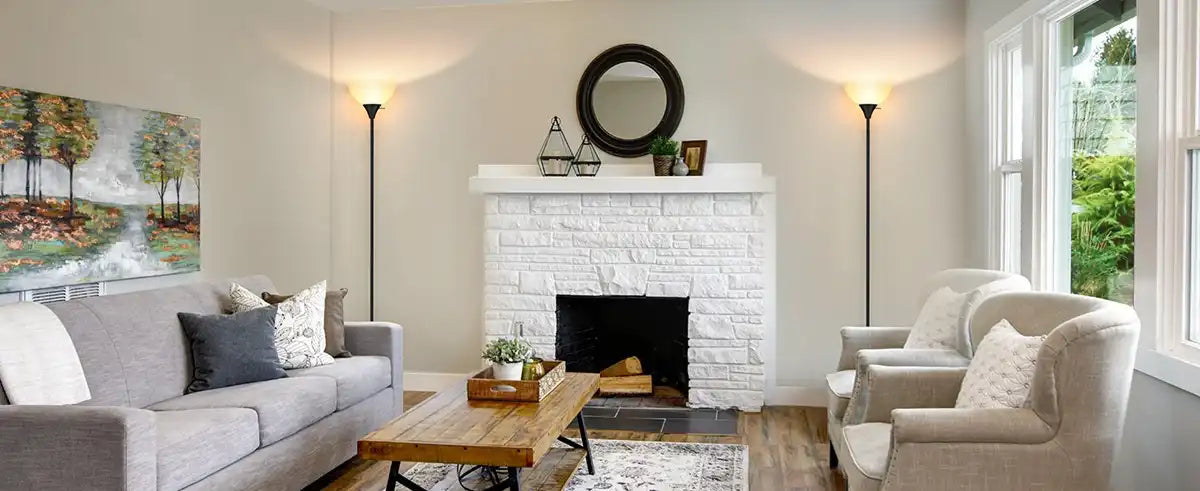Often overlooked, floor lamps do more than just fill a corner. Can they effectively light up an entire room?
We'll delve into the power of floor lamps to transform your lighting approach.
This guide explores how design, bulb type, and placement can influence a room's ambiance. Discover how to optimize your floor lamp to brighten your space effectively.
Stay tuned to learn key tips for maximizing your floor lamp’s potential in home lighting.
Factors Affecting Floor Lamp Efficiency
Lamp Height: The taller the lamp, the broader the area it can illuminate.
Bulb Type: LED bulbs emit more light and consume less energy than traditional bulbs, affecting both the intensity and the spread of the light.
Shade Design: A clear or mesh shade will disperse light more widely, while a solid or dark-colored shade focuses light downward, limiting its spread.
Can a Floor Lamp Light a Room
Yes, a floor lamp can indeed light a room. The effectiveness of lighting up a room with a floor lamp depends on various factors such as the size of the room, the brightness of the bulb used, and the positioning of the lamp.
In larger spaces, you might need more than one floor lamp to adequately light the room. Additionally, using high-wattage bulbs can help enhance the brightness provided by the floor lamp.
How to Light a Room with Floor Lamps
Choosing the Right Floor Lamp
Selecting the perfect floor lamp depends on two main aspects: the size of your room and the decor style. For larger spaces, choose lamps that emit more light and have a wider shade to cover more area. For smaller rooms, a sleek, vertical lamp can add height without taking up much space.
Style-wise, ensure the lamp complements the room’s existing furnishings — a modern lamp for contemporary spaces, or a classic design for traditional decor.
To dive deeper into selecting the ideal floor lamp for your space, consider reading our detailed guide on how to choose a floor lamp.
Strategic Placement of Floor Lamps
The placement of your floor lamp can greatly influence its effectiveness:
Near Seating Areas: Position lamps next to couches or chairs to enhance reading or work activities.
Corners: Placing lamps in corners can help illuminate large parts of the room and make the space feel larger.
Against Walls: For reflective lighting, place the lamp close to a wall to create a soft glow that brightens the room indirectly.
For more detailed insights on positioning your floor lamp for optimal effect, explore our comprehensive guide on where to put a floor lamp.
For more options to find the best floor lamp to suit your needs and enhance your home's ambiance, visit our comprehensive floor lamp product category page.
Combining Floor Lamps with Other Light Sources
Integrating floor lamps with other lighting forms can achieve a balanced and functional lighting scheme. Use a combination of overhead lights, task lights, and accent lights for layers that allow for versatility and ambiance. Floor lamps should complement this mix by adding warmth and depth, making the space inviting and adjustable to different moods or activities.
Types of Floor Lamps to Consider
Torchieres
The torchiere floor lamp directs light upward to reflect off the ceiling, providing a soft, ambient glow that can illuminate a large area. An exemplary model is the SUNMORY Super Bright LED Torchiere Floor Lamp.
This lamp offers stepless dimming brightness and adjustable color temperature, making it a versatile choice for various lighting needs. The slim, 69-inch design integrates seamlessly into any room decor, while the rotatable lamp head allows for directional lighting, enhancing its utility. More details can be found at SUNMORY orchiere Floor Lamp.
Arc Floor Lamps
Arc floor lamps feature a long, curving neck, which makes them ideal for lighting over furniture like sofas or tables without taking up valuable surface space. These lamps are best used in living rooms or reading nooks where directed light is beneficial. Their distinctive shape not only serves a functional purpose but also adds a stylish element to room decor.
Tripod Floor Lamps
Tripod floor lamps stand on three legs, offering a stable base and adding a geometric aesthetic to any interior. These lamps are particularly suitable for creating a focal point in a room, combining both decorative and practical lighting solutions. Their sturdy design prevents tipping, making them a safe option in households with pets or children.
Enhancing Room Ambience with Floor Lamps
Choosing the Right Bulb
The type of bulb you select for your floor lamp significantly impacts the ambiance of your room. LED bulbs provide a clean, efficient light and are available in a range of color temperatures, allowing you to adjust from a warm, cozy glow to a bright, energizing light.
Halogen bulbs offer a crisp, white light that is closer to natural daylight, ideal for reading or intricate tasks. On the other hand, CFLs (Compact Fluorescent Lamps) provide a softer light and use less energy than traditional bulbs, though they take a moment to reach full brightness.
Decorative Tips
Match the Lamp Style with Room Decor: Choose a floor lamp that complements the overall style of your room—modern lamps for contemporary spaces and ornate, detailed lamps for more classical environments.
Use Lamps as Focal Points: Position your floor lamp in a way that it becomes a statement piece, either by its unique design or through its strategic placement in the room.
Layer Lighting: Combine your floor lamp with other light sources such as overhead lights, table lamps, or wall sconces to create a rich, layered effect that enhances the room's depth and texture.
Final Thought
We've explored how effectively a floor lamp can light up a room; now, I'd love to hear your thoughts or experiences—please share them in the comments below!
Further Reading
How to Decorate a Floor Lamp: 16 Creative Ways









Leave a comment
All comments are moderated before being published.
This site is protected by hCaptcha and the hCaptcha Privacy Policy and Terms of Service apply.